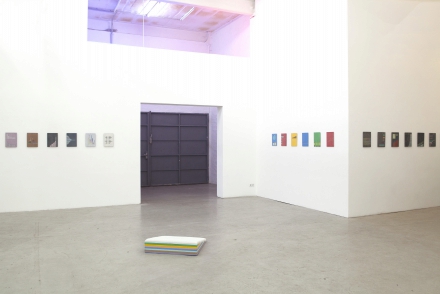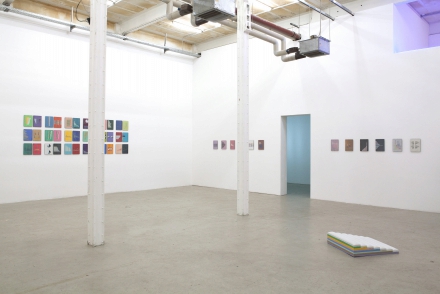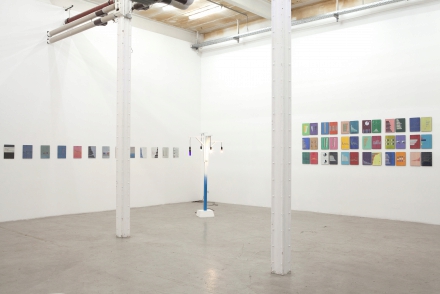
I am soaking wet – despite an only 41 % chance of rain. My shoes squeak with every step I take in the well-lit exhibition space and I am leaving small, muddy puddles on the floor. Heide Nord’s exhibition “Going where the weather suits my clothes“ assembles the works of an artist in apparent refusal of creativity and pursuit of the normative. Since 2011, in addition to sculpture and installation, a series of paintings based on data from the Federal Statistical Office of Germany has developed. Abstraction rooted in concrete numbers, on A4 paper, an office standard if there ever was one.
Colored bars, curves, and twitching jagged lines sprawl out over the graph paper.
One of the titles catches my eye and provides information – “I used to work in a club, where they never came to dance – 6 works on the value of culture for the general well-being of the populace and its federal funding“. I see bar graphs on a grey background. No wonder nobody’s dancing in that club. The subjective data point of the single, constantly self-optimizing and creatively exhausted individual is subsumed under the median curve of the populations’ general well-being. This is the dance score, the choreography of the overall human condition cast onto paper.
Diagrams are the cold, polar opposite of the media-generated images of individual fortunes, designed to appeal to my feelings, my capacity for empathy. Their chain
of reasoning omits the link of the emotional argument for the quantifiable presentation of causality, and the promise of objectivity, predictability and control in a complex
and interconnected world. Diagrams turn chance into a percentage and the blunt force of my arithmetically and statistically determined future sidles past me in patented green and blue. I am also way too cold in my wet clothes for “(Get off the internet) I’ll meet you in the street – 6 works on Google internet surveillance“ to develop any relevance to my personal life. But is there even a point in thinking about diagrams as abstraction(s) anymore? If everything I do leaves a numerical footprint,
a data residue, if I am disintegrating into an interlinked cosmos of numbers, is a diagram not an adequate topical (re)presentation of myself and my place in this world?
The drama of life and death, norm and deviation, unfolding in Heide Nord’s paintings, subvert the diagrams’ promise of giving information and creating an overview.
The titles provide the only clue I can hold on to. The material and tactile features of the paintings take center stage: the application of color, the variation of lines, errors and smudges caused by the process of monotyping. Shapes and colors are reveal a scientific
worldview, a methodology of recording, categorizing and normalizing information:
the appropriation of the conglomerated past to gain control of the future. The interplay
of paintings and sculptures transforms the exhibition space into a sanctuary whose rituals seem both familiar and foreign to me. The rain has stopped. I go outside and leave the ominous prophecies and Cassandra’s call of statistics behind.
Text: Lena Brüggemann
Übersetzung/Translation: Lukas Holldorf & Kathleen Krol

